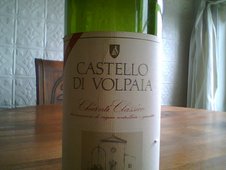
Talking to James Meehan of PDT recently for an article, he mentioned to me the possibility of his introducing a list of "premium cocktails" using high-end liquor. One of these would possibly be a concoction called the Staggerac (hope I'm getting the spelling right), which, as you probably guess, is a spin on the old Sazerac using George T. Stagg, the prized, pricey, 137-proof bourbon.
I like rye in my Sazeracs, of course, but any drink that has anything to do with that classic cocktail excites me, so I took my earliest opportunity to try the new libation. Just before Christmas, I took a seat at the bar and asked for the Staggerac, which I saw was not yet on the menu. The bartendress was a bit surprised, but knew what I was talking about. She went to consult with her fellow bartender on the construction of the drink, as well as its price. She came back and said, "I can make it, but it will be $25. So you have been warned."
I accepted the terms and she went to work. I'm not sure on the other ingredients, but I know the requisite Absinthe was used, and a lemon peel was employed at the end. I've never spent $25 for a cocktail; never more than $15, really, and most people think I'm crazy to pay that. I'll say this, though: PDT didn't skimp on the product. The drink was fairly king-sized. Plus, the drink was strong. I ordered a cocktail after the Staggerac and I really shouldn't have. Because the Stagg left me hammered. I've rarely had such a potent cocktail.
So, be warned if you go into PDT for this treat. It's good, but remember: the Sazerac is meant to be a sipping cocktail, and so is this. Sip it over an hour. Take your time. And then maybe go home.





